What’s going on in Ambient Food?
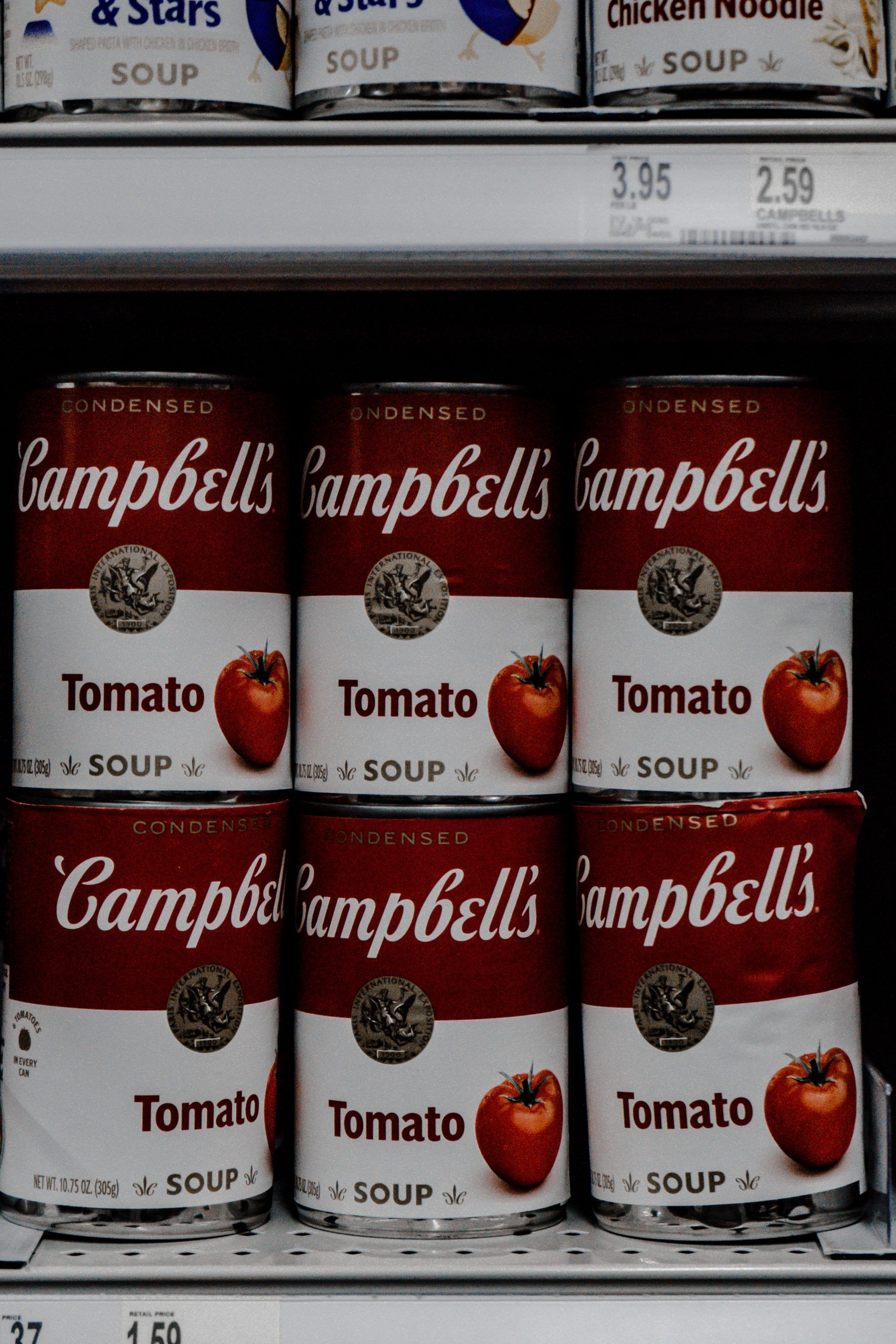
Like any other industrie, the ambient food industry (also known as ‘canned foods’) is looking for ways to innovate in such a way that their products and brands can fit more closely to modern societal trends, such as sustainability and healthiness. Innovation is crucial to determine its position in the future of food. But … compared to fresh food, canned goods are often considered to be not as tasty and not as healthy.
Can canned foods play a role in the future of food? Yes, they can (no pun intended). Ambient foods can be sustainable, tasty, safe, affordable, and obviously very convenient. In addition, they can also make a healthy complement to a meal. For example, canned tomatoes have higher levels of lycopene (antioxidant) than fresh ones. On top of that, canned foods can contribute to diminishing food waste because of their long shelf life. Compared to fresh foods, canned food can be made available in places where fresh produce cannot.
What’s happening?
Together with a talented team of students from Wageningen University, we set out to understand what is happening in the ambient food industry worldwide. Now and in the near future. We made an analysis of (global) trends in society and looked for relevant innovations within the industry, to understand where the biggest opportunities for growth are.
After a thorough search for innovations worldwide, we came up with 41 examples of new and exciting, innovations. The list of carefully selected examples gives us an excellent overview of what’s happening in the ambient shelf. More importantly, it allows us to see what’s going on below the surface because these innovations might just be the first grass root signs of what’s coming. Looking at these gives us a glimpse of the undercurrents that currently exist.
We have highlighted a number of these undercurrents that might just shape the future of ambient foods, along with illustrations of how these undercurrents can be translated into meaningful innovations. As you will see from the examples, often undercurrents don’t come in isolation. Many meaningful innovations smartly combine different developments.
Premiumisation
The word ‘premium’ might not be the first thing that comes to mind when thinking of food in a can. But this is exactly why this is a potential area of growth for the ambient food industry. Why not make something that is really good and special and sell it a premium price? Check out what By Jing and Fishwife are doing.
They joined forces to launch their new Smoked Salmon with Sichuan Chili Crisp. The tinned fish snack contains family-farmed, sustainably sourced Arctic Smoked Salmon brined in extra-virgin olive oil, natural sea salt, organic garlic salt, brown sugar, and of course, Sichuan Chili Crisp. Together, they create a “spicy, tingly, and deeply umami flavour experience” Sounds good, doesn’t? Particularly if you know that the product sells at €39 for a 3 pack and might just be a hit.
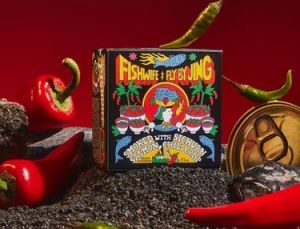
Claiming origins
The country-of-origin effect means that consumers evaluate products differently, depending on where it came from. This affects the perception of the quality of the product alongside many other characteristics. ‘Origin’ can both be far away as well as local. Telling where food came from becomes increasingly important. And within this origin claims trend, we need to pay particular attention to the ethnic food trend. As a result of the continuous migration of people, tourism, and increasing trade, the ethnic food market has been growing vastly as consumer interest in ethnic food has been growing likewise. This trend links to the convenient trend, as busy modern lifestyles make ethnic food restaurants an interesting, convenient, exciting, and often affordable option for consumers. See how the Mexican food brand Siete claims the origin of something as simple as beans.
Beans have a special place at our table and a nostalgic place in everyone’s hearts. Remember being greeted by the savory aroma from a fresh pot of frijoles at our grandma’s house, scooping heaping servings onto our plates with fajitas and tortillas at carne asadas, and enjoying fresh bean and egg tacos in the mornings? Vegan refried pinto beans are there to relive your memories.
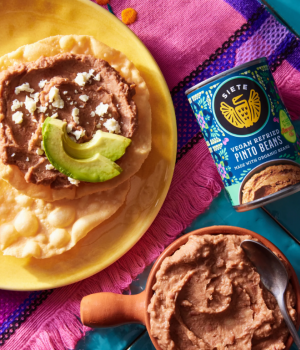
Storytelling
One way to establish the connection between a product or brand and its origin is through storytelling. This is not new, but the omnipresence of social media has now eliminated all barriers to entry. Brands have adopted storytelling for a while because it creates emotional engagement.
What’s new within the trend of storytelling are several sub-trends. Let’s take a look at some. The first one that we notices is the involvement of a chef with the product development. If a well-known chef connects his or her name and reputation to a product, it provides a guarantee for consumers that it must be good and tasty. This way the prejudice regarding the inferior taste of canned food can be beaten.
Another shape storytelling comes in is food activism. Brands shout about their fierce involvement in social subjects like sustainability, plant-based foods, or climate in an effort to connect more personally to their target audience consumers. One way to do this is by connecting to charity. Charities have become more creative in their efforts to educate and attract both businesses and individuals to donate to their cause. Many food companies nowadays are working together with charities to improve the world. These missions go from environmental sustainability to fighting child hunger. Using these missions, the brands tell a story that could appeal to consumers. Another shape food activism takes on, is the empowerment of women. Women-owned brands tend to explicitly state their involvement within the business. Here’s an example.
Tiny Fish is a company owned by chef Sara Hauman. Their mission to inspire the canned fish industry with products that are sustainable and tasty. The brand recently launched a sustainably sourced, chef-made tinned fish product that “encourages consumers to think outside the box.” Dubbed the ‘Smoked Mussels En Escabeche,’ the new offering features smoked mussels from The Pacific Northwest marinated in a savoury sauce.
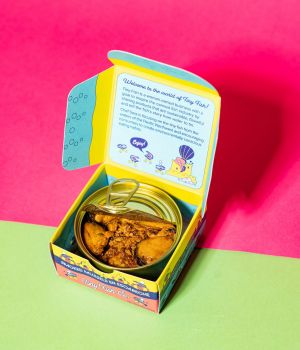
Nutritional Powerhousing
The prevalence of chronic diseases is making more and more people realise they should eat more healthily. More and more is known about what a well-balanced and healthy diet should contain: different nutrients, carbohydrates, proteins, fats, vitamins, and minerals. This increased knowledge leads to an increasingly rationalised food intake, with consumers looking for products that contain specific nutrients or ingredients. Ambient food brands tap into this development by developing products with specific characteristics with specific health benefits such as high-protein, low-carb, keto, and low calories.
Consumers realise more and more how important proteins are for living a healthy lifestyle, making them look for the right proteins in their meals, snacks and beverages. And that’s why we see a sharp rise in claims about the number of proteins.
Another opportunity is offered by the rise of low carbohydrate diets, especially ketogenic diets, which are centred around limiting the number of carbohydrates consumed a day to get into a state of ketosis. Consumers perceive products that claim to be low in carbs as healthier (despite that not necessarily being the case). Developing products that are low in carbs could be of great interest to the ambient food industry as it could result in targeting a growing niche group.
Here’s an example of how the brand Palmini aims at the functional food buyers, by taking an ambient product – palm heart – and by adding small processing step creating an alternative to a well know product. The pasta alternative that they offer has an advantage to traditional pasta as it is both low carb and low calorie.
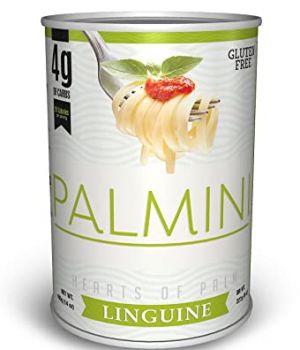
Cleanest label
The movement of clean labelling is becoming more important within the development of products and the marketing of food products as consumers desire products with simple ingredients made in ways that are easy to understand. This trend of ‘’clean labels’’ is defined as foods being free of ‘chemical’ additives, having easy-to-understand ingredient lists, and being produced by the use of traditional techniques with limited processing. Examples are Non-GMO, Dairy, and Gluten-free, the use of natural ingredients, no added sugars, no artificial colours, no preservatives, and cholesterol-free as items mentioned by clean labels. The clean label trend builds on the increasing desire for a healthy and nutritious diet. The rule of thumb consumers apply is that if a product is simple it must be good for you.
And here, ambient foods have an edge. Because their products are canned, there is often less need to add sugar, salt or preservatives. Just look at how Dutch Blyck Leckerneyen does this.
At Blyck Leckerneyen we have a passion for tasty food. We love traditional dishes, prepared with honest ingredients and without preservatives, flavor enhancers, or added sugars and salt. We think it’s important to see with our own eyes where our ingredients come from. .. Our meals are preserved in cans because we believe that this is the only way to preserve the taste and freshness without adding sugars, salts, or preservatives. Meet our tasty meals and read the story behind each dish.
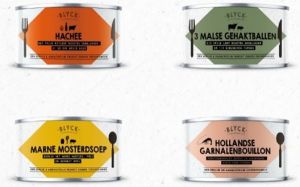
How to use these findings?
Any successful innovation starts with a good idea. And any good idea stems from inspiration. The trends, undercurrents and examples we have dug up can be used as excellent thought starters. If you are looking for opportunities to fill your innovation pipeline, you need these thought starters add a little creativity to the strengths of your brand or company and then ideas will start to come up.
All of the 41 examples of innovations in ambient food have been added to our ever-growing innovations database. If you are interested in our database, a presentation or an ideation workshop, please contact our Research Director Durk Bosma.
We believe that understanding consumers is key to making the food system more sustainable. Successful innovation and impactful communication require a solid foundation of consumer insight.
We are the insights partner of choice for food companies and non-profits that aim to have a positive impact on society and our planet. Together we empower consumers to make food choices that are good for them as well as for the planet.
The Hague Tech - Wilhelmina van Pruisenweg 35 - 2595AN - The Hague
(+31) (0)70 2042314 - Info@futureoffood.institute
Contact
Fill in this form and we'll be in touch shortly!
Newsletter
Do you want to receive a monthly dose of insights, opinions and events? Please subscribe to our newsletter.









